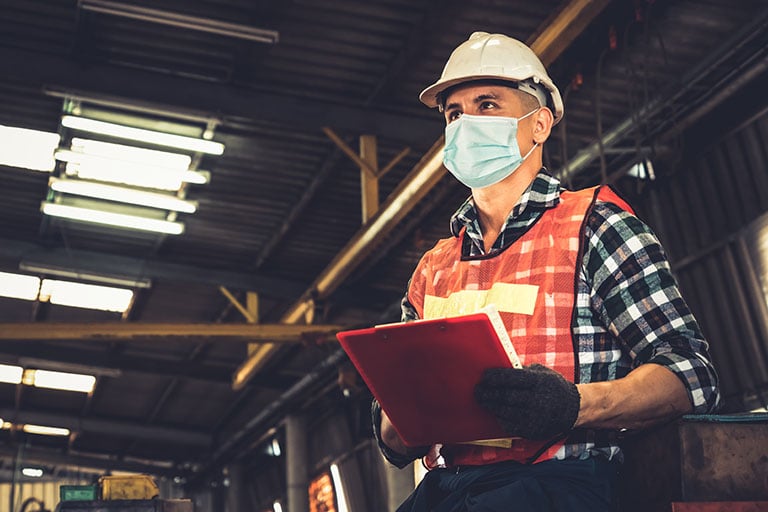August 12, 2020 | Employee Training, Health & Safety Services, Business Growth Strategy & Strategic Planning
Surviving and Driving Through the Crisis

How can employers protect their employees and workplaces while battling COVID-19?
In order for manufacturers to develop a safety plan for their facilities, they must consider the whole workforce and all visitors. “Your assumption should be that people who look perfectly healthy may be asymptomatic carriers and spreaders,” said Eliot Dratch, a CMTC consultant and manufacturing operations/safety expert.
Controls for Risk MitigationEmployers should implement the controls that are the most realistic, effective, and sustainable for their respective workplaces. And, when a single method does not provide full protection for an employee, employers should use a combination of controls.
OSHA recommends three practices for workplace safety in order of priority: engineering controls (best), administrative controls (good) and PPE (last line of defense).
Practice #1: Engineering Controls
The preferred method, engineering controls, places a physical barrier between the worker and the hazard. For example, one company created physical distancing by putting plexiglass partitions next to each worker. Other examples are re-designing for new boundaries on the floor to eliminate physical hand-offs and increasing the space between employees in breakrooms, in their actual workspaces, and as they enter and exit the buildings.
Practice #2: Administrative Controls
The second line of defense, administrative controls, changes the way people work, focusing on the most common exposure points. Exposure points are defined as the places in the facility where people can physically come into contact with the virus. As the virus has a lifetime varying from three hours to three days (depending on the type of surface involved), it’s important to focus safety-planning efforts according to the greatest risk. One common exposure point is the breakroom, where administrative controls can reduce risks for the company; for example, implementing staggered breaks and lunch times to reduce close proximity for employees. Other administrative solutions include time clock physical distancing and changes to locker and bathroom areas.
Practice #3: PPE Solutions
The last line of defense, Personal Protective Equipment (PPE), protects the worker by minimizing exposure to the virus. Companies are required to provide face coverings to employees. A hazard analysis will aid companies in determining what type of face covering employees will require. Any time new PPE is introduced or required for new situations, companies should provide training on how to put it on, use it, take it off, dispose or clean it, and how to care for it. Some examples of PPE that may be required as a result of a hazard assessment are: face shields (precautionary in certain situations), gloves (not recommended except for those who disinfect common surfaces), and N-95 particulate respirators (reserved for specific job types and calls for a number of testing requirements and documentation).
Because there is a major shortage of PPE throughout California, CMTC has identified three recommended match-making sites to assist manufacturers. For details, visit the CMTC’s Need PPE? site.
Employee Tests Positive: What to Do
Testing for COVID-19 ranges from diagnostic (viral) tests and antibody (serology) tests to rapid antigen tests (not yet available). Cindy Beard of Constant Associates stated, “First, employees with symptoms really should not go to work at all. Employers should discourage employees from returning to work, but they can’t mandate that employees be tested.”
When an employee tests positive, the employer then becomes responsible for contact-tracing. In addition, the impacted employee’s workspace must be deep-cleaned.
Related Resources
- COVID-19 Workplace Safety Guidance Webinar Series:
- CMTC COVID-19 Help Site

Leave a Comment